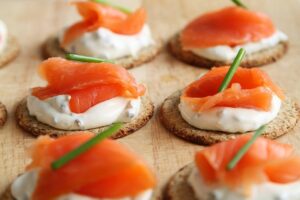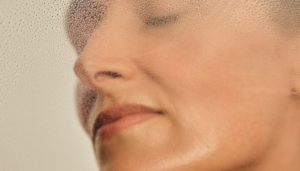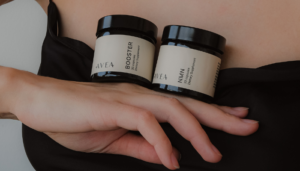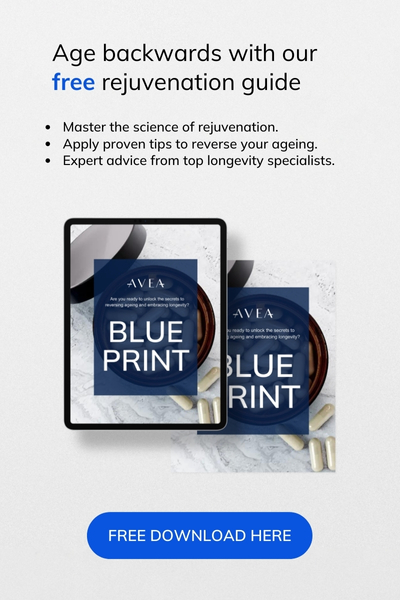To successfully tackle stress, activating your body’s innate relaxation mechanism is essential. Employing methods like deep breathing, visualisation, meditation, and yoga can prove beneficial [1].

In this article
Free guide to reverse your biological age

- Master the science of rejuvenation.
- Apply proven tips to turn back the clock.
- Transform your health with top longevity specialists.
Identifying your ideal method for stress relief
For many of us, unwinding often involves curling up on the sofa and tuning out with netflix after a day filled with stress.
Yet, such habits barely scratch the surface of mitigating stress’s harmful impacts. Instead, you should tap into your body’s inherent relaxation reflex—a profound state of rest that
- reduces stress in its tracks
- decelerates your breathing and heart rate
- diminishes your blood pressure
- restores equilibrium to both your physique and psyche
This can be achieved through engaging in relaxation practices like deep breathing, meditation, rhythmic exercise, yoga, or tai chi.
Though opting for services like professional massages or acupuncture is a choice, a vast array of relaxation methods can be practised solo or with the help of freely available audio downloads or affordable apps.
It’s crucial to recognise that no singular relaxation technique universally suits everyone. Our individuality plays a significant role.
The most effective method is the one that truly speaks to you, seamlessly integrates into your lifestyle, and successfully concentrates your mind to invoke the relaxation response.
This may necessitate some experimentation to discover the method(s) that perfectly align with you.
Once found, consistent practice can significantly diminish daily stress and anxiety, enhance your sleep quality, invigorate your energy and mood, and bolster your overall health and well-being.
1: Deep breathing
Focusing on complete, purifying breaths, deep breathing stands out as a straightforward yet potent technique for relaxation.
It’s remarkably easy to pick up, can be practised just about anywhere, and offers a swift method to manage your stress levels.
Serving as a fundamental component of numerous relaxation practices, deep breathing can also be enhanced by incorporating elements such as aromatherapy and music.
Whilst mobile apps and audio guides can facilitate your practice, all that’s essentially required is a few quiet moments and a comfortable spot to sit or recline.
How to practise deep breathing
- Sit in a comfortable position with your back erect. Place one hand on your chest and the other on your abdomen.
- Inhale deeply through your nose, allowing the hand on your abdomen to rise while the hand on your chest remains mostly still.
- Exhale through your mouth (like you’re blowing out through a pipe), in an attempt to expel as much air as possible by engaging your abdominal muscles. As you exhale, the hand on your abdomen should draw inward, but the other hand should remain relatively motionless.
- Continue this pattern: inhaling through your nose and exhaling through your mouth. Aim for your lower abdomen to lift and lower with each breath. Count slowly each time you exhale to maintain a steady rhythm.
- Should you encounter difficulty in breathing from your abdomen while seated, consider lying down. Place a small book on your abdomen, and breathe in such a manner that the book rises with your inhalation and falls upon exhalation.
Embracing this technique can significantly enhance your ability to manage stress and cultivate a sense of calm.
2: Progressive muscle relaxation
Progressive muscle relaxation is a dual-step method that involves methodically tensing and then relaxing different muscle groups throughout your body.
With habitual practice, this technique cultivates a deep understanding of both tension and complete relaxation in various body parts.
Recognising the initial signs of muscular tension that stress induces becomes easier, facilitating a quicker response to alleviate stress. As your muscles unwind, your mind follows suit, embracing tranquillity.
Integrating progressive muscle relaxation with deep breathing enhances the stress-relief benefits further.
How to practise progressive muscle relaxation
Should you have a history of muscle spasms, back issues, or any severe injuries that might be exacerbated by muscle tension, please consult a healthcare professional prior to beginning.
- Begin with your feet and gradually work upwards towards your face, concentrating on tensing only the targeted muscle groups.
- Ensure you’re comfortable: loosen any tight clothing, remove your shoes, and find a relaxing posture.
- Spend a few moments taking slow, deep breaths to prepare.
- When ready, focus on your right foot. Pay attention to its sensations.
- Gently, yet firmly, tense the muscles in your right foot. Squeeze them as tightly as possible and hold this tension for a count of 10.
- Now, release the tension in your foot. Notice the sensation of release as your foot becomes soft and relaxed.
- Remain in this state of relaxation briefly, continuing with deep, slow breaths.
- Shift your focus to your left foot and repeat the process of tension and relaxation.
- Progressively move through your body, methodically tensing and relaxing each muscle group.
It might require some initial practice to perfect this technique, aiming to only tense the specific muscles intended without inadvertently tensing others.
3: Body scan meditation
Body scan meditation is a practice that directs your awareness to different parts of your body. Similar to progressive muscle relaxation, it begins with your feet and gradually progresses upwards.
But, instead of tensing and relaxing muscles, you simply concentrate on the sensations felt in each body part, without classifying these sensations as either “good” or “bad”.
How to practise body scan meditation
Position yourself lying on your back, with legs straight, arms by your sides, and your eyes preferably closed. Begin by focusing on your breathing for approximately two minutes, or until you start to feel a sense of relaxation.
Shift your attention to the toes of your right foot. Observe any sensations there, while continuing to maintain focus on your breathing. Visualise each deep breath as it flows towards your toes, remaining attentive to this area for at least three to five seconds, or possibly longer.
Next, direct your awareness to the sole of your right foot. Engage with any sensations you detect in this part of your body, and imagine each breath travelling up from the sole of your foot.
After a minute or two, move your attention up to your right ankle and follow the same process. Continue this method moving up to your calf, knee, thigh, hip, and then start the same sequence with your left leg.
Proceed upwards through your torso, passing through the lower back and abdomen, to the upper back and chest, and finally the shoulders. Give special attention to any part of the body that experiences pain or discomfort.
Upon completing the body scan, allow yourself a period of quiet and stillness, taking note of how your body feels overall. Then, gently open your eyes and stretch if you feel the need.
4: Visualisation
Visualisation, or guided imagery, is a twist on traditional meditation that has you imagine a scene where you’re utterly at peace, free from all tension and anxiety. Pick any setting that calms you down the most, be it a tropical beach, a fond childhood nook, or a serene, wooded glen.
You’re free to practice visualisation on your own, or use an app or audio download to walk you through the imagery. You can also choose to carry out your visualisation in silence or accompany it with auditory aids, like soothing music, a sound machine, or a recording that mirrors the ambiance of your chosen setting, such as the sound of ocean waves if you’re picturing a beach, for example.
How to practise visualisation
Close your eyes and envision your tranquil place. Try to picture it as vividly as possible: all that you can see, hear, smell, taste, and touch.
Simply “looking” at it in your mind’s eye as though it were a photograph isn’t enough. Visualisation is most effective when you incorporate as many sensory details as possible. For instance, if you’re imagining a dock on a calm lake, you might:
- See the sunset reflecting on the water.
- Hear the birds chirping.
- Smell the pine trees.
- Feel the cool water on your bare feet.
- Taste the fresh, clean air.
Allow yourself to enjoy the sensation of your worries floating away as you slowly explore your place of rest.
When you’re ready, gently open your eyes and return to the present moment. It’s normal if you occasionally zone out or lose track of where you are during a visualisation session.
Experiencing feelings of heaviness in your limbs, muscle twitches, or yawning are also normal responses.
5: Self-massage
You’re likely familiar with the stress-relieving, pain-reducing, and muscle-relaxing benefits of professional massages at spas or health clubs.
But did you know that you can achieve similar benefits by practising self-massage? Whether at home or during a break at work, exchanging massages with a partner, or using a bed equipped with massage capabilities.
Consider setting aside a few minutes for self-massage whilst at your desk in between tasks, on the sofa after a busy day, or in bed as a prelude to a restful night.
Enhance the relaxation experience with the use of aromatic oils, scented lotions, or by integrating mindfulness and deep breathing techniques into your self-massage routine.
How to practice a 5-minute self-massage
A variety of strokes can effectively ease muscle tension. Experiment with gentle chopping motions using the edges of your hands, or tapping with your fingers or cupped palms. Apply direct fingertip pressure to any knots in your muscles.
Knead your muscles, employing long, soft, gliding strokes. These techniques can be applied to any area within easy reach. For a brief session, focus particularly on your neck and head:
- Begin by kneading the muscles at the back of your neck and shoulders. Use a loose fist to drum swiftly up and down the sides and back of your neck.
- Use your thumbs to make small circular motions at the base of your skull. Continue by massaging your scalp with your fingertips, moving methodically across the area.
- Tap your fingers across your scalp, progressing from the front to the back and then along the sides.
- Proceed to massage your face, creating tiny circles with your thumbs or fingertips. Pay special attention to the temples, forehead, and jaw muscles. Use your middle fingers to massage from the bridge of your nose outward over your eyebrows to your temples.
- To conclude, close your eyes, cup your hands gently over your face, and take a few relaxed breaths in and out for a moment of tranquillity.
6: Mindfulness meditation
In recent times, mindfulness has surged in popularity, earning praise from celebrities, business moguls, and psychologists alike. But what exactly is mindfulness?
It’s a practice that shifts your focus from concerns about the future or ruminations on the past to the present moment, allowing you to engage fully with the here and now.
Mindfulness meditation, a method proven to mitigate stress, anxiety, depression, and other adverse emotions, involves concentrating on a singular, repetitive action — like your breath or repeating a specific word.
Other mindfulness techniques prompt you to observe and then let go of your inner thoughts and feelings. Mindfulness can be incorporated into daily activities such as walking, exercising, or eating, making every moment an opportunity for practice.
Mastering mindfulness and maintaining focus on the present requires practice and patience. Initially, it’s common for your mind to drift back to past worries or future anxieties.
But, don’t lose heart. Each effort to return your focus to the present strengthens a new mental habit, helping in overcoming preoccupations with past or future stresses. Assistance from apps or audio guides can be particularly helpful in the early stages of practice.
How to practise mindfulness meditation
- Select a quiet space where interruptions are unlikely.
- Sit in a comfortable chair, ensuring your back is straight.
- Close your eyes and choose a focal point, such as the sensation of breathing — the air moving in and out of your nostrils, or your abdomen rising and falling — or a meaningful phrase to repeat during the meditation.
- If you become distracted by thoughts, don’t fret or judge yourself. Simply, and gently, redirect your focus back to your chosen point of concentration.
7: Rhythmic movement and mindful exercise
Engaging in exercise might not immediately strike you as relaxing, yet participating in rhythmic activities that establish a pattern of repetitive motion can trigger your body’s relaxation response. Such activities include:
- Running
- Walking
- Swimming
- Dancing
- Rowing
- Climbing
How to practise rhythmic movement and mindful exercise
Incorporating a mindfulness element into rhythmic exercise can amplify its stress-relieving effects.
Mindful exercise, akin to the principles of mindfulness meditation, involves immersing yourself entirely in the present moment, focusing acutely on the sensations within your body as you move, rather than on any external distractions or internal preoccupations.
Rather than letting your mind drift or watching a screen while exercising, concentrate on the feelings in your muscles and the rhythm of your breath.
For instance, when walking or running, be mindful of how your feet make contact with the ground, the cadence of your breathing, and the sensation of air brushing against your skin.
If engaging in resistance training, synchronise your breathing with your movements, and remain aware of the sensations in your body as you lift and lower weights.
Should your thoughts start to stray, softly redirect your focus back to the sensations of your breath and the movement of your body.
8: Yoga and Tai Chi
Yoga combines dynamic and static postures with deep breathing techniques, effectively diminishing stress and anxiety while enhancing flexibility, strength, balance, and endurance.
It is widely regarded as a holistic approach to well-being, is an ancient practice that traces its roots to India. Moving through various asanas (poses) with attention to breath, yoga offers a deep sense of relaxation and mindfulness. The benefits of yoga span across physical, mental, and emotional dimensions, offering a comprehensive approach to health and longevity.
To prevent injuries and ensure proper form, it’s advisable to start learning yoga through group classes, private tuition, or guided video tutorials. After mastering the fundamental poses, you can adapt your practice to your preferences, either solo or in a group.
Different types of yoga
Nearly every yoga session concludes with a relaxation pose, styles that prioritise slow, controlled movements, deep breaths, and gentle stretches offer the greatest stress relief benefits.
The number of yoga types can vary depending on how one categorises them, but there are several well-recognised styles that are commonly practised around the world. Here’s a brief overview of some of the most popular types:
1. Hatha Yoga: Often considered the foundation of all yoga styles, Hatha Yoga focuses on physical postures (asanas) and breathing techniques (pranayama).
2. Vinyasa Yoga: Known for its fluid, movement-intensive practices, Vinyasa Yoga classes often vary and can range from gentle to rigorous.
3. Ashtanga Yoga: A rigorous style of yoga that follows a specific sequence of postures and is known for its demanding physical practices.
4. Iyengar Yoga: Focuses on precision and alignment in the execution of postures, often with the use of props like blocks and straps.
5. Bikram Yoga: Consists of a series of 26 postures and two breathing exercises practised in a room heated to approximately 105 degrees Fahrenheit.
6. Kundalini Yoga: Emphasises awakening the kundalini energy through regular practice of meditation, pranayama, chanting mantra, and yoga asana.
7. Yin Yoga: A slow-paced style of yoga with postures that are held for longer periods of time, aiming to increase circulation in the joints and improve flexibility.
8. Restorative Yoga: Uses props to support the body in passive poses, allowing for deep relaxation without effort.
9. Power Yoga: An active and athletic style of yoga, adapted from the traditional Ashtanga system, focusing on building strength and endurance.
10. Sivananda Yoga: Based on five principles for optimal health and spiritual growth, including proper exercise (Asana), proper breathing (Pranayama), proper relaxation (Savasana), proper diet (vegetarian), and positive thinking (Vedanta) and meditation (Dhyana).
11. Anusara Yoga: A modern-day Hatha Yoga system that is both spiritually inspiring and grounded in a deep knowledge of outer and inner body alignment.
12. Jivamukti Yoga: A path to enlightenment through compassion for all beings, this style is physically vigorous and intellectually stimulating with an emphasis on spiritual development.
There are many more styles and sub-styles of yoga, as it is a dynamic and evolving practice. Each style has its unique focus, techniques, and benefits, catering to the diverse needs and preferences of practitioners worldwide.
Should you have doubts about the suitability of a yoga class for stress relief, don’t hesitate to contact the studio or consult the instructor.
Tai Chi
Tai chi, often described as “meditation in motion,” is a mind-body practice that originated in China as a martial art.
It combines gentle physical exercises and stretches with mindfulness, moving through a series of postures or movements in a slow, graceful manner while practising deep breathing.
The benefits of tai chi are broad and impactful across various aspects of physical, mental, and emotional health:
- stress reduction
- improved balance
- greater flexibility
- muscle strength
- better circulation
- enhanced immune system
- increased energy and stamina
- pain management
- mental health benefits
- improved sleep
- cardiovascular health
- cognitive function
Tai Chi is an accessible, low-impact exercise suitable for all age groups and fitness levels, including seniors and individuals recuperating from injuries.
Similar to yoga, the best approach to learning Tai Chi is through formal classes or private instruction, after which you can comfortably practice alone or with others.
References











